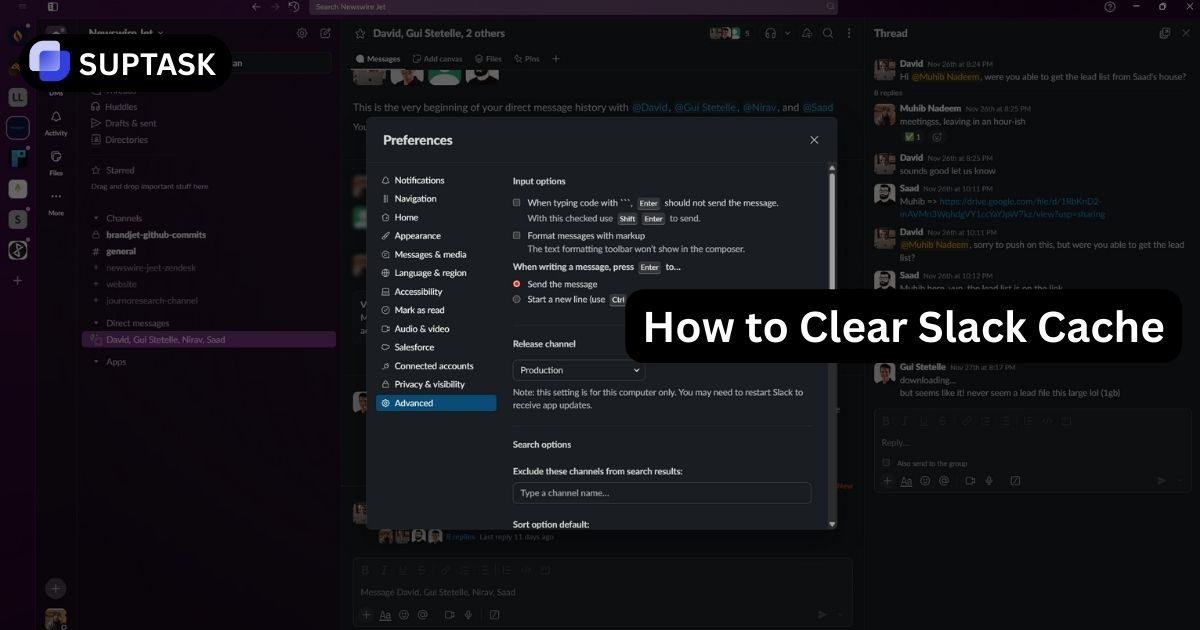The cross-functional collaboration unites departments to tackle complex challenges, fostering innovation and streamlining operations.
This article explains its benefits and provides practical strategies for implementation, avoiding jargon and complexity.
Key Takeaways
- Cross-functional collaboration harnesses diverse expertise to boost innovation and efficiency using tools like Trello and Slack.
- Effective leadership in cross-functional teams boosts collaboration, utilizes diverse skills, and enhances job satisfaction.
- Overcome cross-functional collaboration challenges with transparent communication, shared goals, and conflict resolution strategies.
Making Teams Work Together Smoothly
.webp)
Teams working alone are outdated. Companies now bring together workers from different areas.
This is why cross-functional collaboration is key to success. By having teams work toward shared goals, companies get these benefits:
- More creative ideas
- Happier employees
- Working more efficiently
- Aligning work with business aims
This collaborative approach improves decision-making by including diverse viewpoints. It provides clear direction and optimizes the company's structure.
To understand cross-functional cooperation, we need to look at what makes effective cross-functional teams, what helps them succeed, and how leaders can foster this kind of collaboration.
What Are Cross-Functional Teams?
Cross-functional teams are the heart of collaboration. They bring together people with different expertise to work on a shared goal. The diversity goes beyond just job roles and includes:
- Different backgrounds and experiences
- Unique perspectives and problem-solving styles
- Varied strengths and skill sets
Teams work best when members have different:
- Experience levels
- Skills
- Roles in the company
- Time with the organization
- Ages
- Genders
- Locations
This variety brings unique views and methods. It improves creative problem-solving and makes decisions better.
How Cross-Team Collaboration Works Well
Cross-team collaboration happens when people from different departments work together on a shared goal.
They share different skills and perspectives to solve complex issues and drive innovation. Clear communication about when and how updates happen is key. By mixing diverse backgrounds and skills:
- Feedback and conflict build communication abilities
- Open discussions challenge and refine ideas
- Different viewpoints are valued in decision-making
- Combining expertise leads to innovative solutions
For effective cross-team collaboration, having the right tools is crucial. Tools like Trello, Asana, Slack, Microsoft Teams, and Google Drive offer shared views, aiding efficient and effective teamwork.
Introducing Suptask, a versatile tool designed to enhance cross-functional collaboration. Suptask allows teams to:
- Receive tickets in Slack for seamless collaboration
- Create tickets from Direct Messages (DM)
- Handle tickets from anywhere in Slack
- Keep sensitive information private with private tickets
- Work together to resolve tickets among agents
- Overview and manage tickets directly in Slack
- Customize ticket forms and fields
- Access dashboard analytics with KPI metrics
- Receive detailed email reports
Suptask also integrates with GitLab, GitHub, JIRA, and Zendesk, supporting approvals, followers, and interactive Service Level Agreements.
This tool ensures smooth communication, efficient problem-solving, and enhanced productivity across departments.
The Role of Team Leaders in Fostering Collaboration
Leadership plays a crucial role in the effectiveness of cross-functional teams. It is imperative that team leaders:
- Develop detailed and coherent plans which correspond with the project’s aims as well as the overall strategic objectives of their company.
- Actively foster an atmosphere conducive to collaboration.
- Promote candid dialogue among participants.
- Ensure every individual on the team can actively participate in shaping their responsibilities.
For leaders of functional teams, possessing robust leadership abilities, interpersonal solid capabilities, and adeptness at problem-solving, is vital.
These competencies are essential for steering cross-functional groups toward triumph by maximizing each member’s talents and knowledge bases.
The Advantages of Integrating Cross-Functional Teams
.webp)
Incorporating cross-functional teams brings several advantages that contribute positively to the work environment, including:
- Heightened levels of employee engagement
- Enhanced overall efficiency across the organization
- An increase in job satisfaction by nearly 30%
- A reduction of staff turnover by 20%
- Lower levels of burnout in workers
Cross-team work disrupts routines and relies on each person's skills. This promotes new talks in the workforce.
A culture focused on teamwork draws top talent due to its focus on making big connections with peers and leaders. We'll look at how cross-teams boost employee engagement, enable knowledge sharing across departments, and improve processes.
Boosting Employee Engagement Through Teamwork
Being part of cross-teams results in:
- More engaged employees united for shared goals
- Greater understanding among staff
- An environment for creative problem-solving
- Chances for career growth
Team building using varied expertise and views in cross-teams improves resolving issues and boosting customer support.
For remote teams, recognizing achievements boosts morale and shows the importance of cross-working.
Knowledge Sharing Across Departments
Cross-department teamwork fosters sharing specialized knowledge from diverse areas. This encourages new thinking.
It creates an environment for combining ideas and creative solutions. Teams with different views and know-how working together produce pioneering answers.
Setting clear goals helps different teams work together better. When teams share ideas, it helps them make good choices.
During product creation, knowledge sharing between teams combines their skills. This leads to better decisions and faster product making.
Streamlining Work Processes for Project Success
Teams with diverse people working together create streamlined processes. When teams look at information closely and stay neutral, they often make precise decisions.
Collaboration helps align teams with core goals, so they focus on shared aims.
Cross-functional collaboration gives structure to improve teamwork. Clear communication and expectations make teamwork better.
Merging teams leads to a complete product and streamlines the process. Each person uses their skills while learning to enhance efficiency - improving collaboration through project stages.
Improving Team Work across Departments
.webp)
To work well together, cross-department teams need to build trust and respect. They should feel free to share ideas openly.
Fun team activities like Slack games for remote teams, learning sessions, or creative exercises bring people closer. They promote better understanding between members of different teams.
As a project manager, you have a big job to make teams work well together. Here are some key things you can do:
- Set clear roles and duties for each person
- Give chances to train in other roles
- Plan fun team-building activities
- Help resolve any conflicts
- Keep projects with many parts moving smoothly
- Build teams that work together great
FAQ
What is cross-functional collaboration?
Orchestrating a project involving multiple organizational sectors to achieve a unified goal.
What are the benefits of cross-functional collaboration?
Enhances worker involvement, boosts productivity, and encourages creative problem-solving by sharing expertise.
What challenges can arise in cross-functional collaboration?
Trust issues, communication barriers, and misaligned goals, are manageable with strong leadership and clear communication.
How can collaborative tools enhance team productivity?
Enable real-time collaboration, and manage tasks, timelines, and communication, significantly boosting team productivity.
What role do project managers play in cross-functional collaboration?
They steer communication, set clear objectives, resolve disputes, and lead the team to success.


.webp)










